29.03.2014Kampot – The Salt ‘N Pepper Eldorado
Kampot is a quiet riverside town just a few kilometers from the Gulf of Thailand. Traveling from Sihanoukville we reached the little town in the evening, just early enough to watch the sun set behind the mountains:
In Kampot we stayed at “The Columns”, a restored historic French colonial house. Located in the heart of old town Kampot:
Many of the streets were lined with ageing colonial style houses:
Most of the restaurants and shops are located along or in the vicinity of the river. The shops are small and mostly offer hand-crafted goods and souvenirs. Andy bought a pair of Khmer Tie pants here which are very comfortable and can be adjusted to increasing or decreasing belly extents.
The location on the riverside is lovely and we enjoyed the nice weather wandering along the riverbanks:
Time just flew by and before we realized, it was getting dark again and the sun began to disappeared at the horizon behind the mountain range:
That evening we went to a restaurant called Rikitikitavi at the riverfront to enjoy the rest of the sunset and typical Cambodian food. Our cocktails tasted great tough they were not Cambodian. They were called “Moscow Mule” and a combination of vodka, lime juice and ginger beer:
Cheers!
Andy had the “Cambodian style Chicken Kebab” which consisted of chicken breast, pineapple, onion and peppers strung up on a skewer, served with a spicy peanut satay sauce and barbecued over hot lava stones:
Tini had the “Loc Lac”, a classic French colonial Khmer dish, prepared with tender cubes of beef, simmered in a full bodied sauce and served with jasmine rice, salad greens, Kampot-pepper lime-sauce (best taste ever!) and a fried egg:
As a dessert we shared a warm chocolate cake with a scoop of mango sorbet. Yummy!
From the outside our restaurant became quite an eye-catcher when they turned on the outside illumination.
Our typical Column’s breakfast:
Can you by now guess who chose which?
The next day we were picked up for our country-side tour to explore more of south Cambodia. We first visited Cambodia’s only salt fields. They extract salt from the ocean and provide most of Cambodia with salt.
The process is pretty straight forward. Water is streamed from the ocean to the fields and evaporated using solely the power of the sun, leaving salt crystals behind. The raw salt is then collected and piled up in huge warehouses among the salt fields. This is very labor intensive work: The two baskets with the wet salt weigh 50 to 60 kilograms and the ground that the workers have to pass is wet and salty. And if that wasn’t enough, the sun relentlessly burns down. That’s why the work on the salt fields starts even before dawn.
From the warehouses the salt is delivered to the salt factory where it is cleaned and packaged in 50 kilogram bags, for shipment throughout the country.
Despite the work being very labor intensive we also saw women working on the salt fields and hauling the salt baskets to the warehouse.
One kilogram of salt is worth about 1 cent USD. Or in other terms, one ounce of gold will buy you 130’000 kilograms of salt…
We continued on and passed a mobile “pottery-shop”:
As clearly described on this sign, our next stop was at the Phnom Chhnork Caves 🙂
The entrance to the caves was next to a Buddhist temple at the top of this hill:
From the top we had a good view over the surrounding country-side covered with rice fields which had been harvested. Cambodia’s economy is mainly agricultural-based with more than 80 % of its 14 million people working as farmers, growing rice as their main crop. About two-thirds of the rural population depends on rice farming.
Then we entered the limestone cave:
At one point in the cave we had a look at the cave’s roof and saw hundreds of small bats hanging on the ceiling:
After climbing over rocks and through small openings we eventually made it out of the cave were a wall of heat welcomed us back:
From the caves we continued on to the famous pepper plantations around Kampot. On the way we passed dozens of fruit plantations. We spotted our favorite, mango trees:
Would you recognize these? They are passion fruits and one of the fruits we came to love during our trip. Besides being very healthy the taste is exceptional and no comparison to the passion fruit juices they sell back home.
Next we arrived at the pepper plantation. Did we drive all the way out here to simply see a bunch of pepper poles?
Yes. The pepper poles of “the world’s best pepper”. There is pepper and then there is Cambodia’s Kampot pepper. The naive might think that the stuff that comes out of shakers and grinders is pretty much the same wherever you go. So what makes Kampot pepper so special?
The food-and-travel-show host Anthony Bourdain says: “It’s got a floral dimension that’s really something special” and executive pastry chef at the famed Le Bernardin restaurant in New York City Michael Laiskonis says, Kampot pepper has “a certain sweetness to it rather than straightforward heat”.
You don’t care about the gibberish of these modern cooks? Well, the appreciation for Kampot pepper reaches back much further! Back in the days when Cambodia was a French protectorate and years before the Cambodian civil war, 90 % of the pepper harvested was exported solely to France. No self-respecting French restaurant in Paris would be without Kampot pepper on the table. But the Khmer Rouge and the 30 years of civil war that followed, put a stop to the pepper production in Kampot. Pepper farms almost completely vanished and only few poles remained out of the million still in place in the 1960s. In 1996 pepper farming was successfully initiated once again and is on its way to shine in new splendor. However a full renaissance is still a long way off, as Cambodia exported only a few thousand kilograms of pepper last year.
Once we arrived at the pepper plantation located at the foot of Phnom Voa mountain we were welcomed by the local farmer with whom we toured the plantation.
We learned that the main reason why the delicacy and sweetness of Kampot pepper puts it in a class of its own, are the porous soils and the local area’s pepper-perfect micro climate combined with traditional farming methods. The porous and mineral-rich soils allow a good drainage of rain water which is especially important during the rainy season. The micro climate is created by the geographic location, nestled between the mountains and the sea. The traditional farming techniques have been passed down from the parents to the children and thankfully some of this knowledge survived the horror of the Khmer Rouge years.
All these ingredients ensure the high quality and great taste of Kampot’s pepper. Only half a dozen districts of the Cambodian provinces in Kampot and Kep exist in which this criteria is met and Kampot pepper is the first Cambodian product to enjoy a protected geographical status, which certifies the origin of regional food.
Pepper connoisseurs appreciate Kampot pepper for its mildness of spice, freshness and complexity of its aromas and its exceptional and lingering taste.
How could we resist? We bought one of each pepper type directly off the plantation. They are vacuum sealed and certified to be real Kampot pepper. Can’t wait to use them in our dishes back home 🙂
An interesting fact we were not aware of before, is that the different color pepper kernels and thus different types of pepper all stem from the same pepper plant. The type of pepper depends solely on the time of harvest and subsequent treatment. During the ripening process the green pepper kernels change from green to yellow to red to black and are dried in the sun after harvesting. The 4 different types of pepper are consequently green, white, red and black pepper.
– For green pepper the kernels are harvested when they are still young and before changing color. The aroma of the green pepper is mild and perfectly matches grilled fish dishes.
– For white pepper the kernels are harvested when they turn yellow or bright red. It is difficult to harvest them in the small time-window and thus white pepper is the rarest of the four types. After harvesting they are soaked in water for several days and their husk is removed. When the remaining pepper kernels are dried their color is white. White pepper develops an intense bouquet and delicate aroma and has a strong spicy taste suited for soups and creamy dishes.
– For red pepper the kernels are harvested when the kernels turn a vibrant red. The red pepper delivers a powerful and fruity aroma.
– And last the most common and wide spread black pepper. It is harvested in the very last stage. Its essence delivers a strong and delicate aroma adding flavor to all kind of dishes.
From the pepper plantation we headed on to the seaside-town of Kep, which was founded as a colonial retreat for the French elite in 1908. It is famous for its splendid seafood and thus the perfect place to lunch:
We stopped at one of the many restaurants located right at the beach and passed through the barbecue area as we entered. Hmmm, crispy barbecued squid:
Andy chose the barbecued fish:
From the top side it looked as one would expect, but from the front he looked pretty vicious and we were glad we met him on our plate and not in the water 😉
Tini had a spicy shrimp-vegetable dish which was prepared with a delicious green Kampot pepper sauce:
Right next to the restaurant was the local market and we had enough time to wander around it. Here the dried shrimp section:
The fabrication of liter-amounts of chili-garlic sauce:
And more barbecued fresh fish. Even though we had just eaten the smell was really delicious!
They looked a lot less mean than Andy’s fish:
And wherever we looked, all kinds of fresh fish. A specialty of Kep are also the blue-legged crabs:
Many booths offered “Kampot” pepper and had huge bags of pepper kernels. Luckily our guide had warned us that this pepper is just imported regular pepper, which they sell to locals and as “Kampot” pepper for elevated prices to tourists.
Ohh, not far from the barbecue we saw the local Kep gas station:
After lunch and the market it was time for some relaxing. We drove to the nearby pier and boarded a little boat to Koh Tonsay (Rabbit Island).
We went ashore at this beautiful white sand beach:
In the shade we found the perfect place for a little after-lunch nap:
In the late afternoon we were picked up by boat again and headed back to Kampot. After almost two weeks in Cambodia we were used to the appearance of overloaded motorbikes:
We found out that these motorbike transports typically belong to Vietnamese, who buy mangoes in Cambodia and import them back to Vietnam, which is just an hour away.
After our country-side tour and on the last evening in Kampot we decided to revisit the Rikitikitavi restaurant. This time we started with a “Mai Tai”, mixed from a yummy blend of rum, Cointreau and Amaretto combined with orange, fresh pineapple and lime juice:
As a main dish, Tini had the vegan “Kuree Krahom”, an authentic Cambodian red vegetable curry freshly made with French beans, eggplant, onions, potato, carrot and local herbs and spices:
Andy had the “Sait Moarn Chantii”, a dish consisting of local cashew nuts, carrots, peppers, baby corn, onion, green beans and tender chicken pieces stir fried in a spicy sauce:
And as we really loved the hot chocolate cake the evening before, we ordered it again. This time with a scoop of strawberry ice cream:
The next morning we boarded the bus back to Phnom Penh, where we stayed for another night before leaving for Vietnam. We had a great time in Khmer country, with its history both inspiring and depressing. Beside the wonderful attractions, the Khmer people that we got to know were Cambodia’s biggest treasure.
This entry was posted in Asia, WorldMapComments
Leave a Reply
You must be logged in to post a comment.
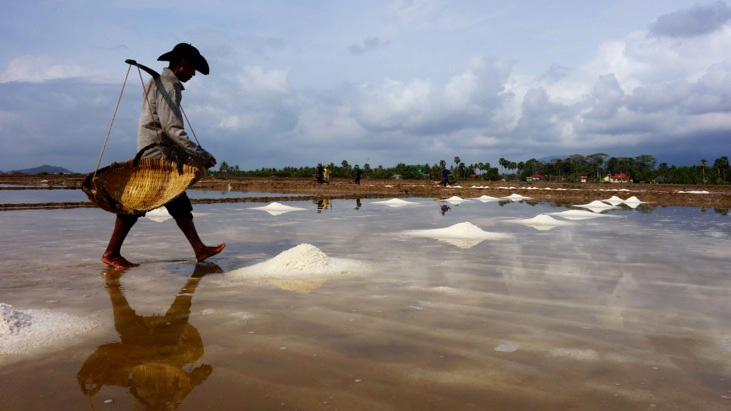
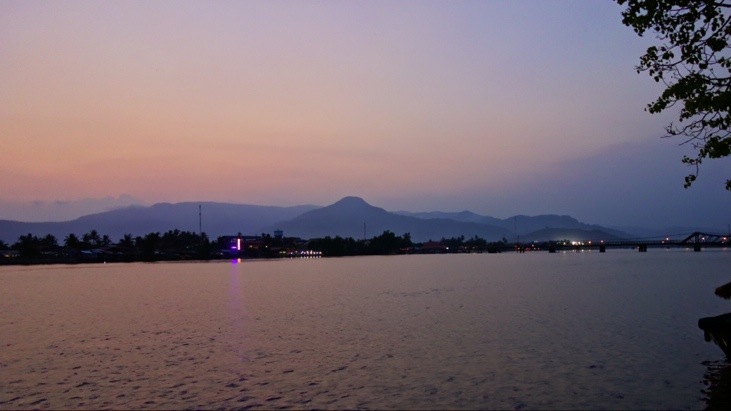
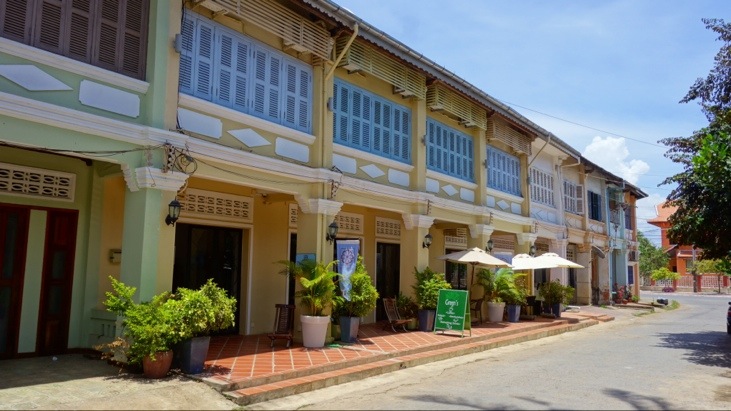
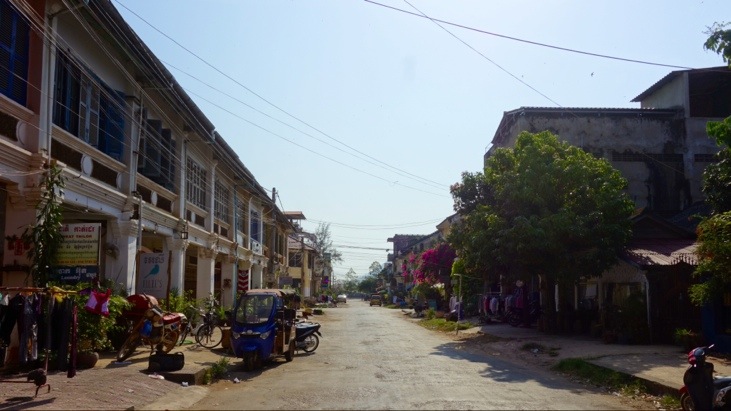
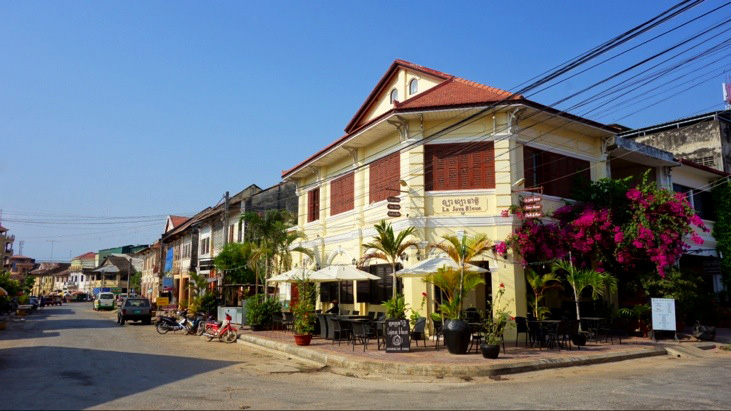
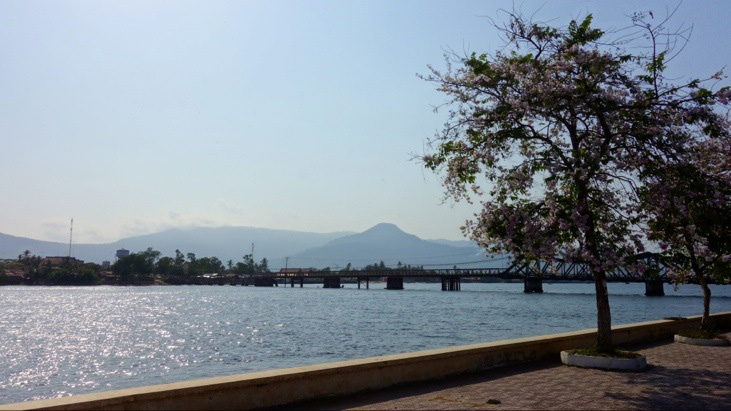
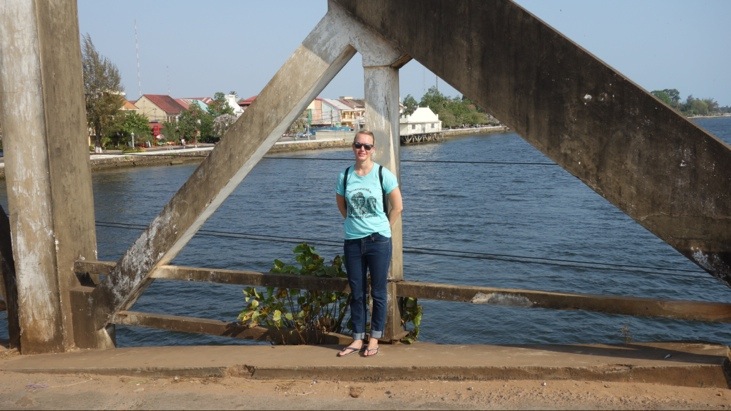

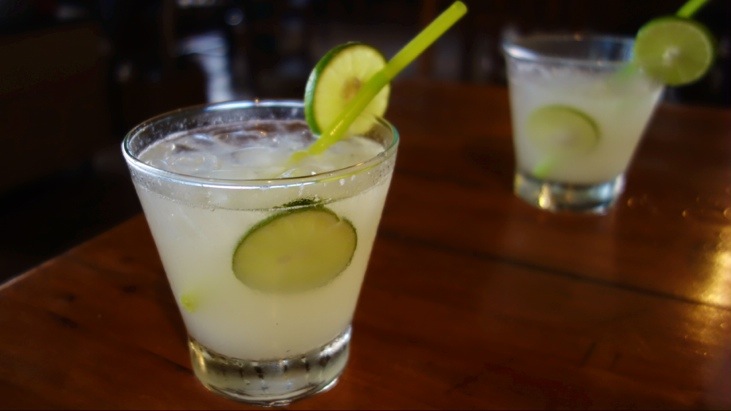
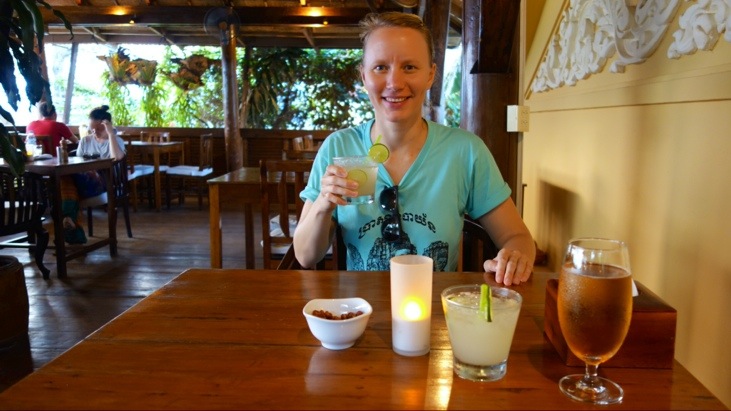
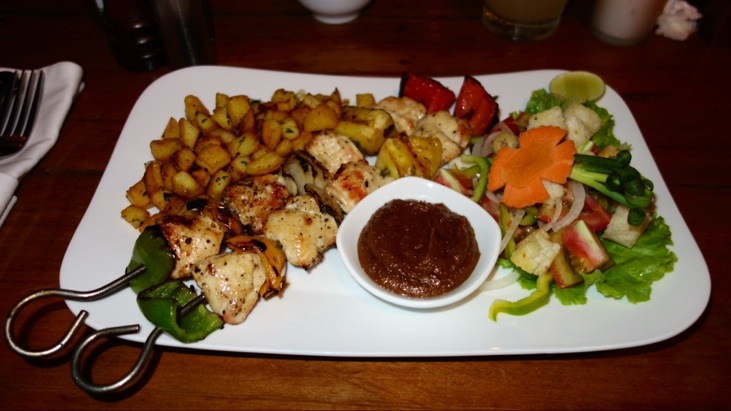
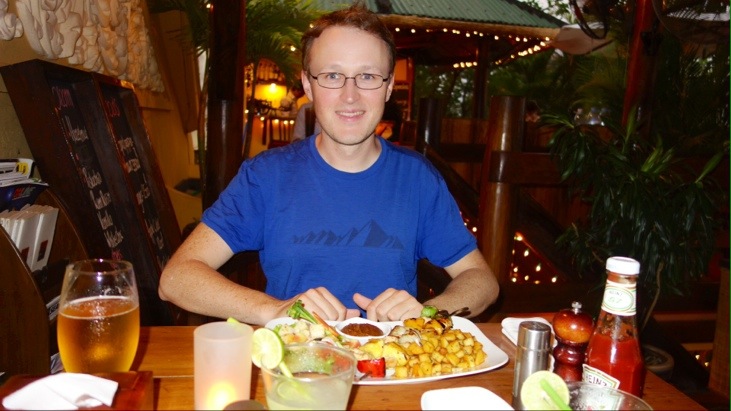
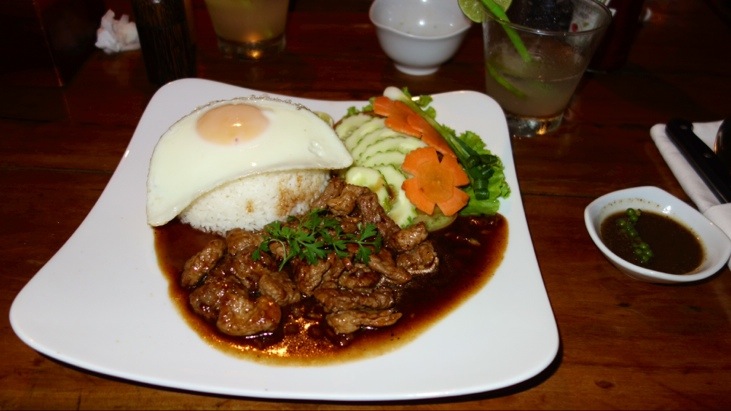
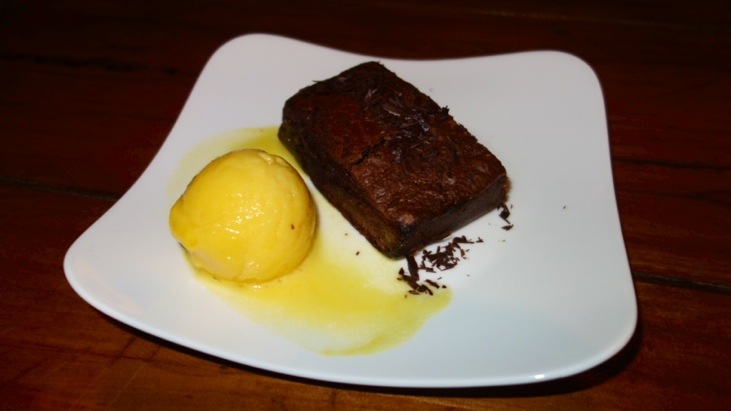
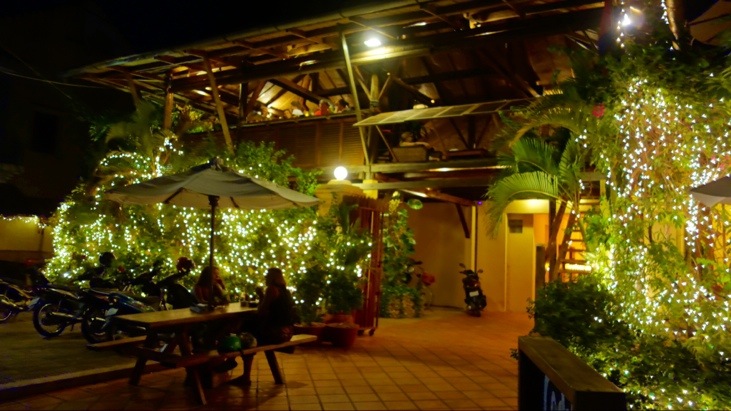
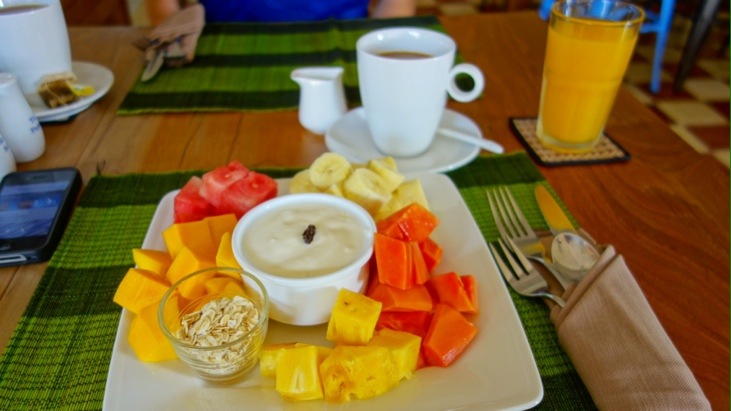
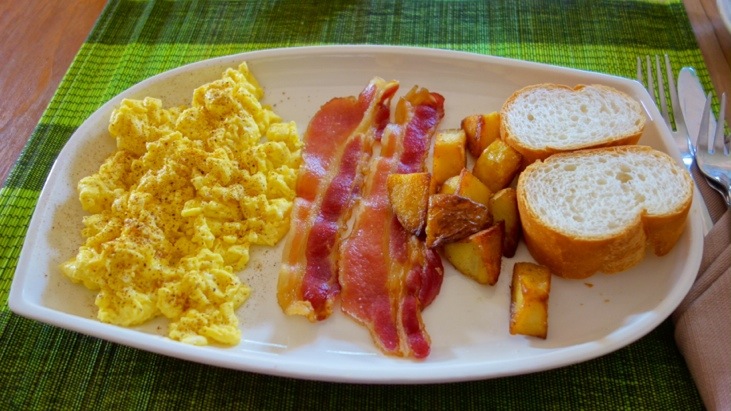
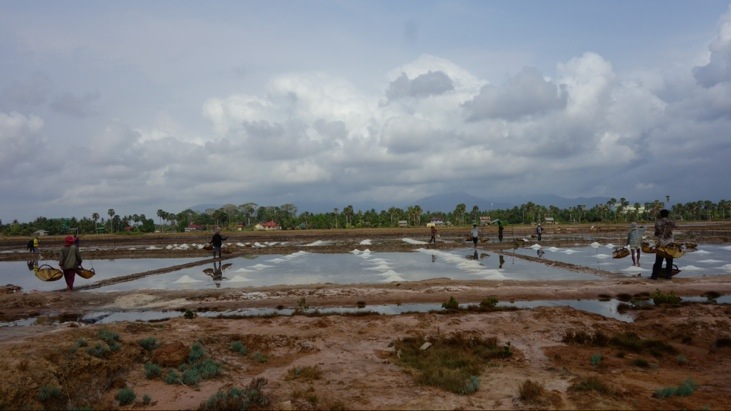
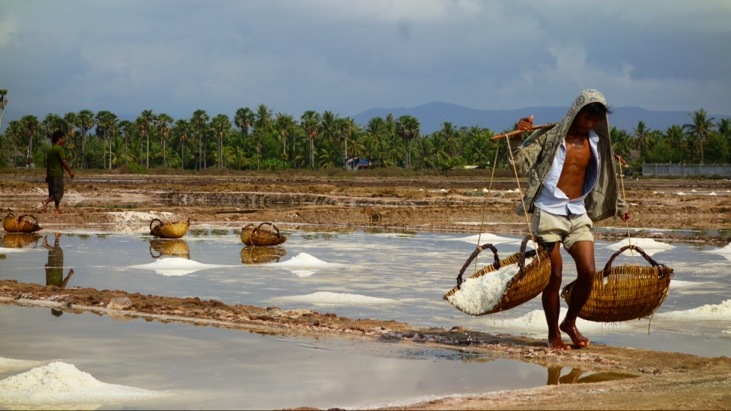
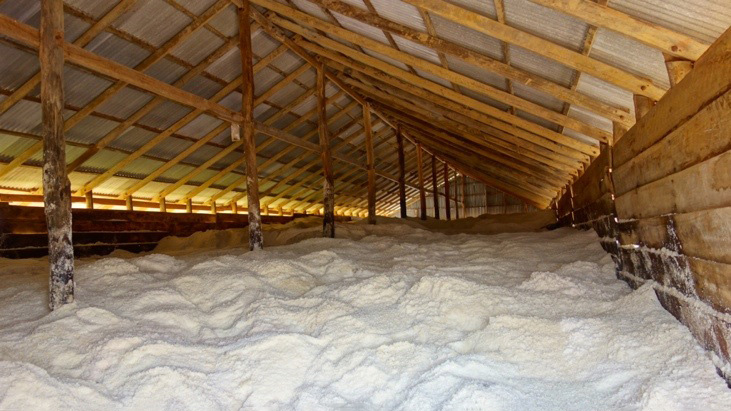
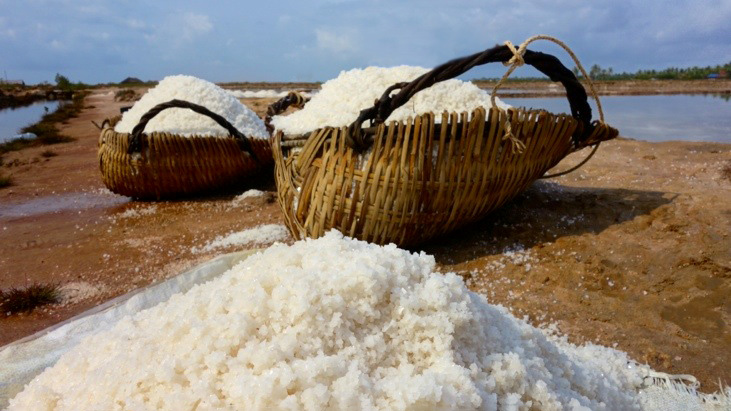
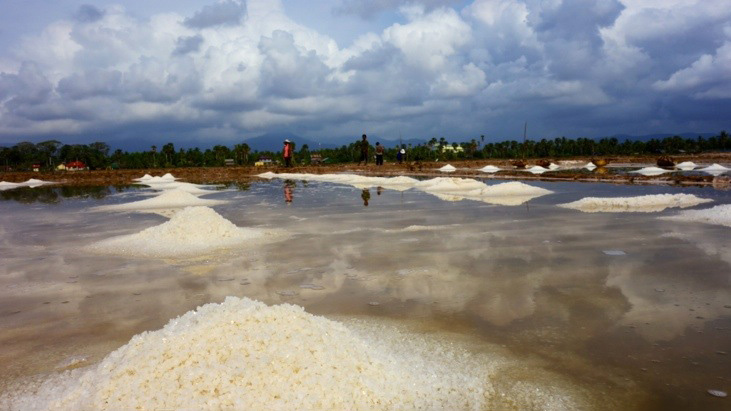

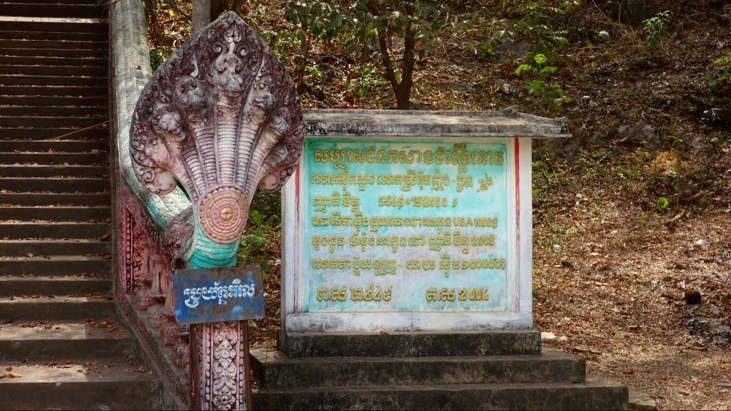
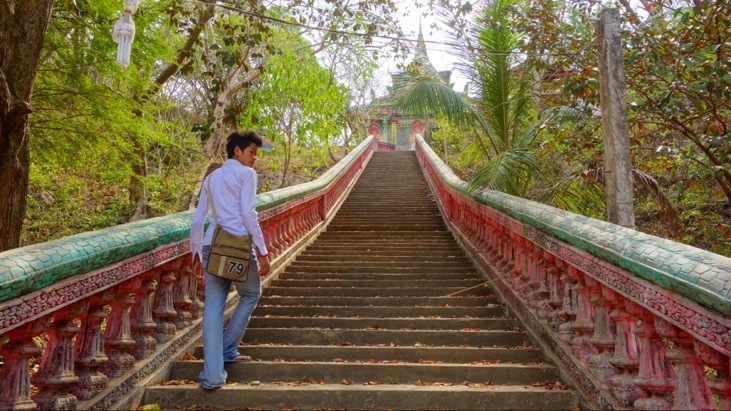
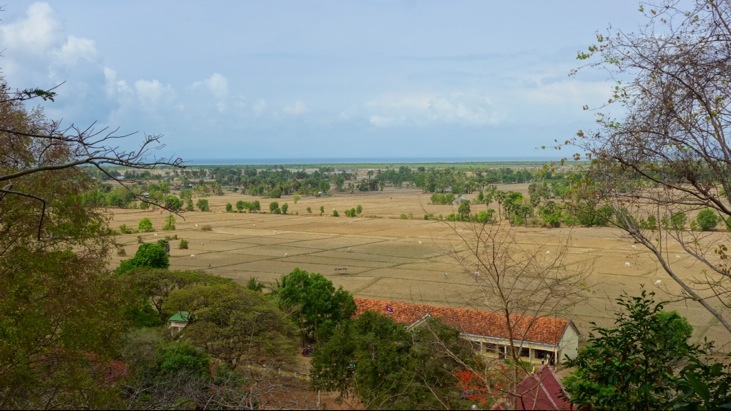
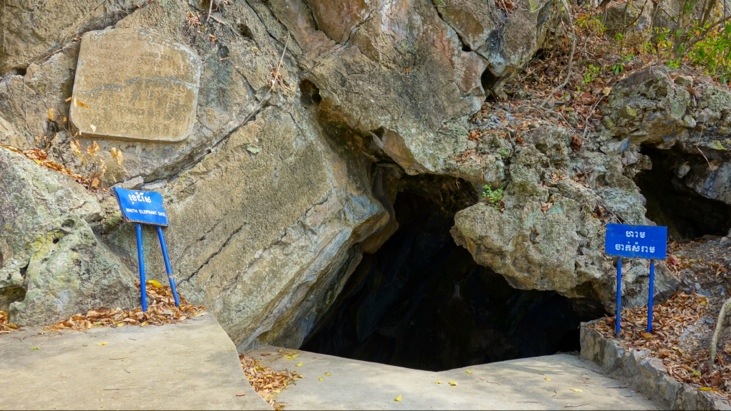
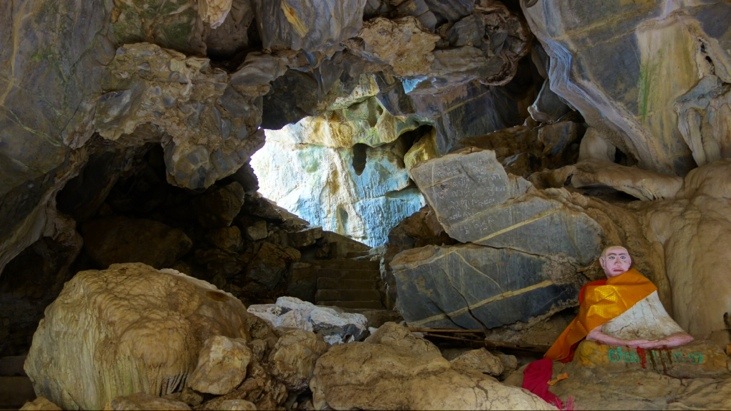
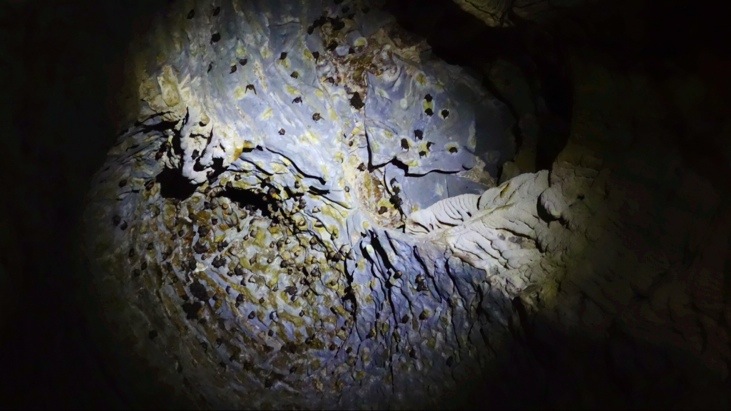
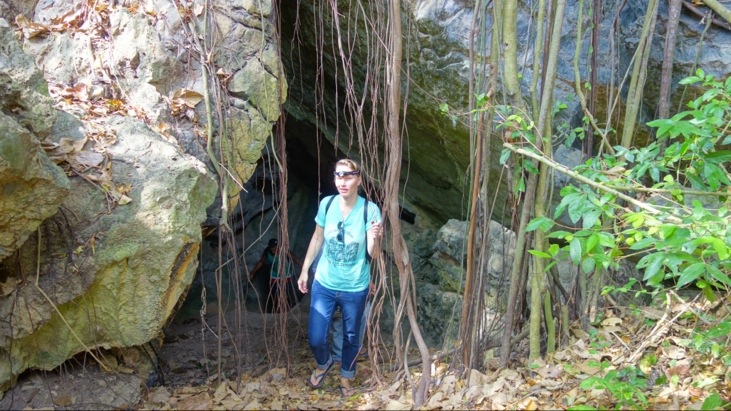
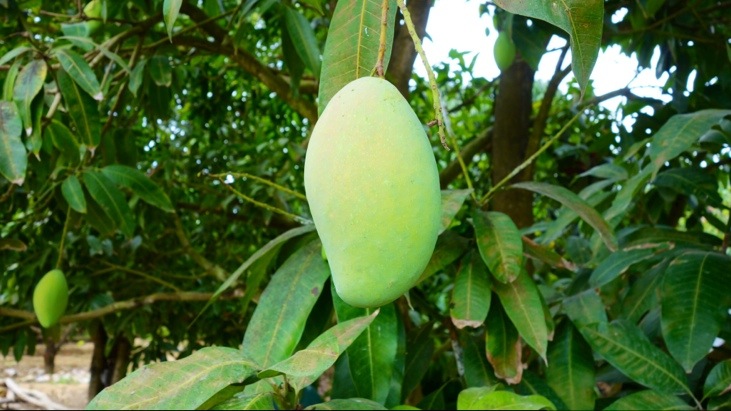
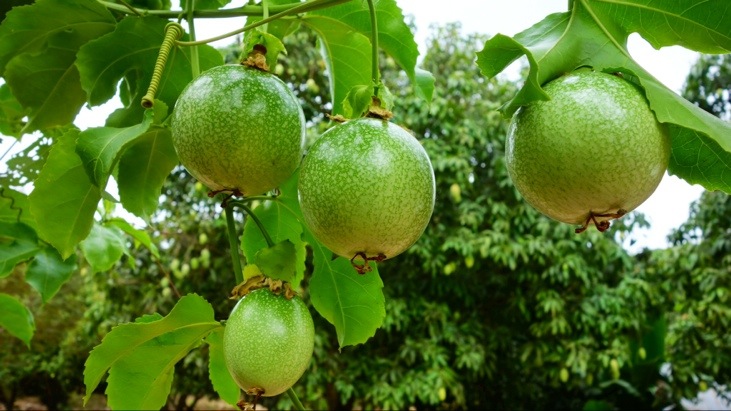
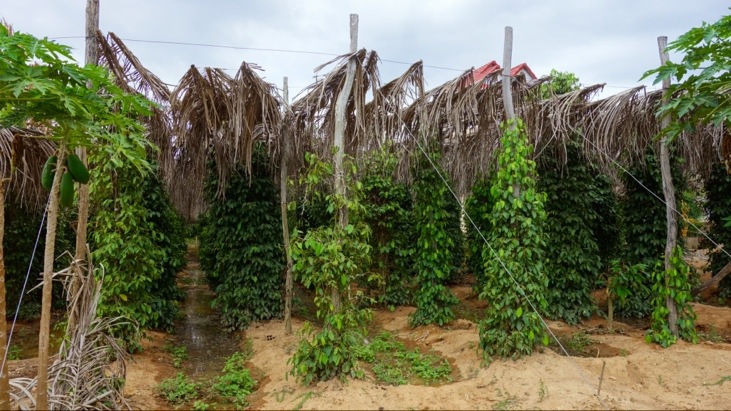
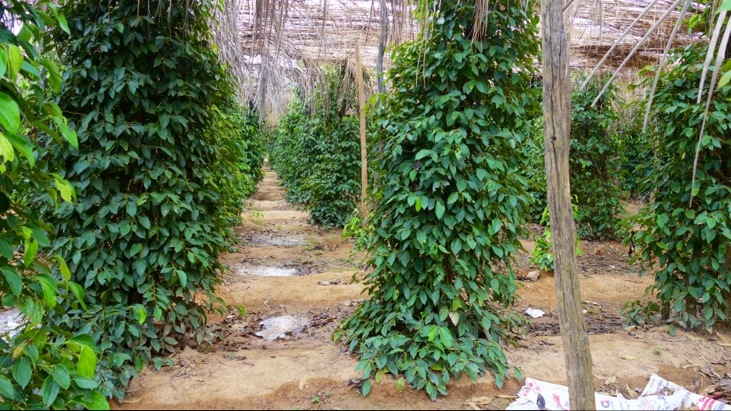
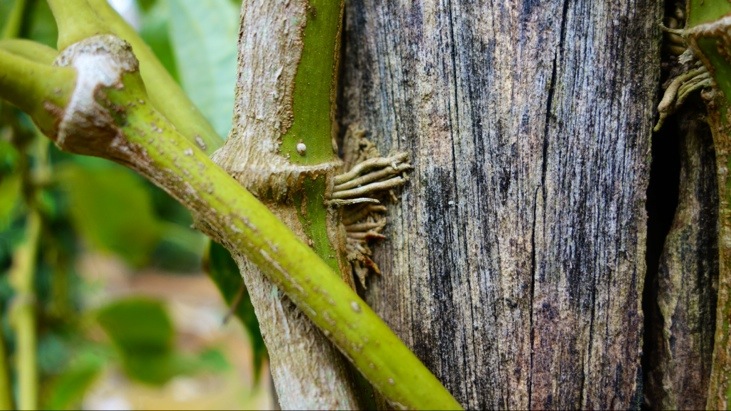
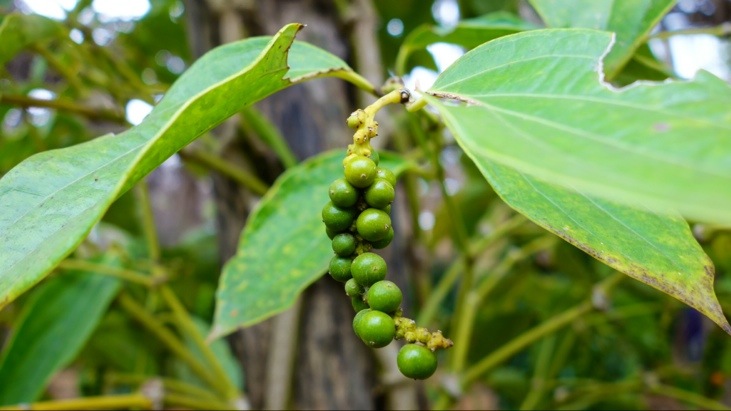
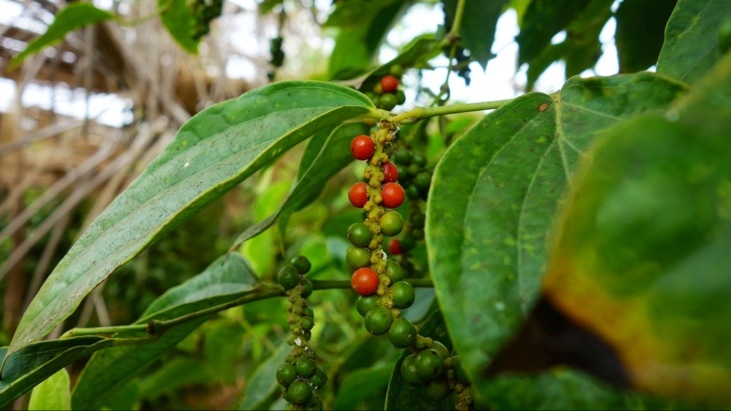
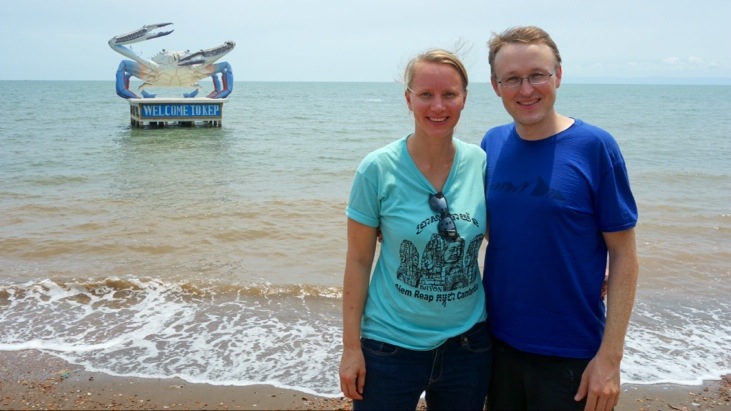
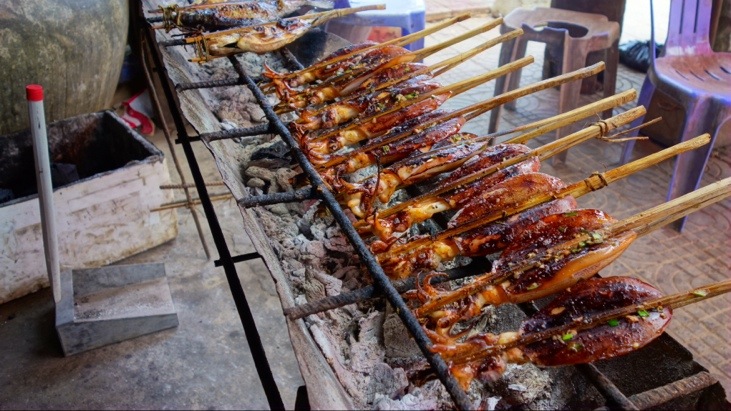
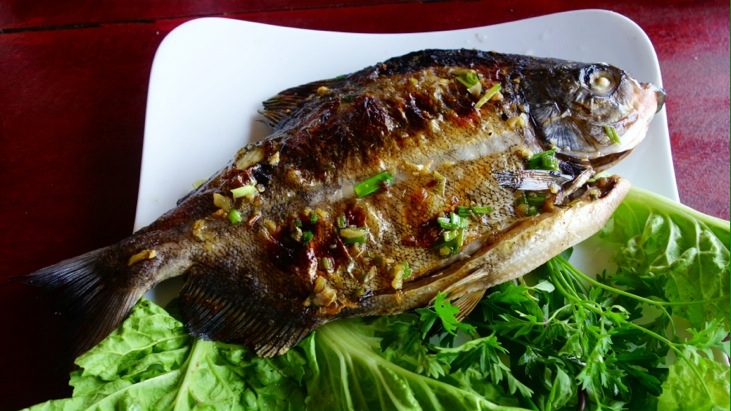
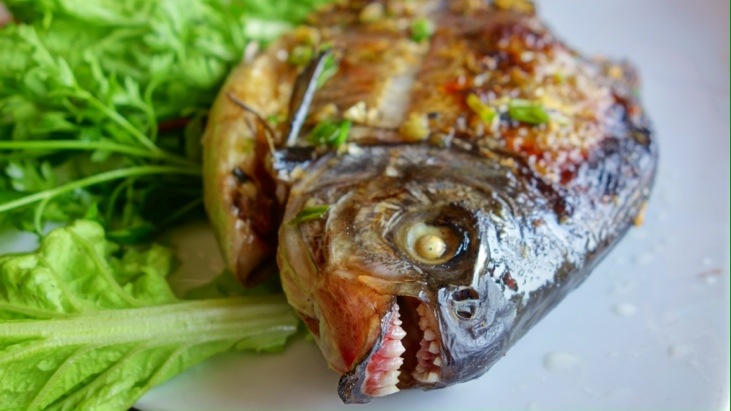
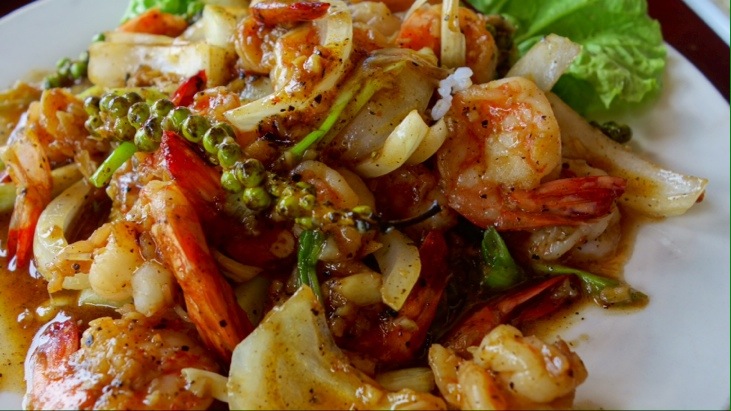
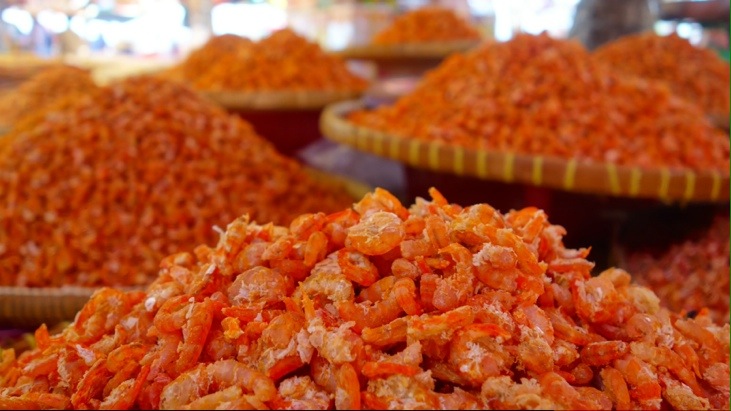
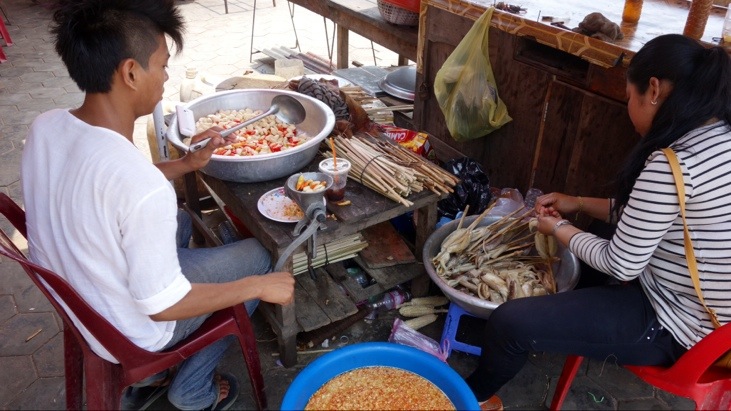
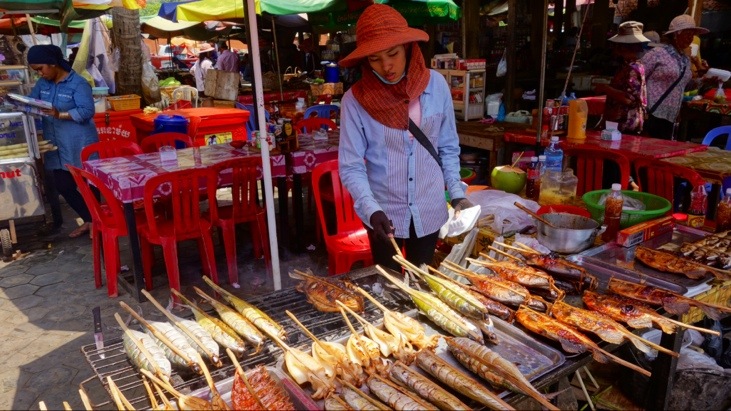
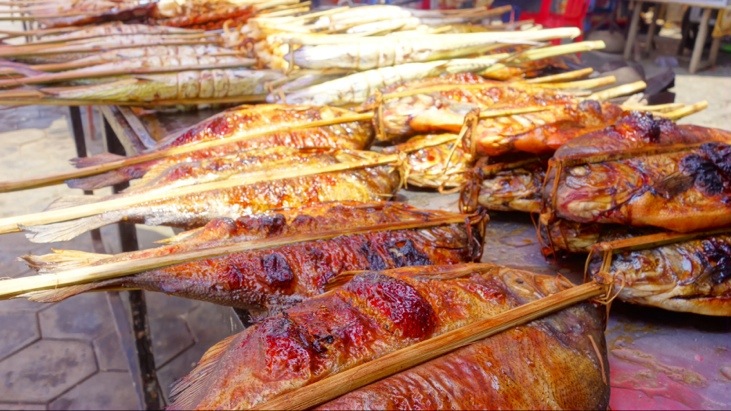
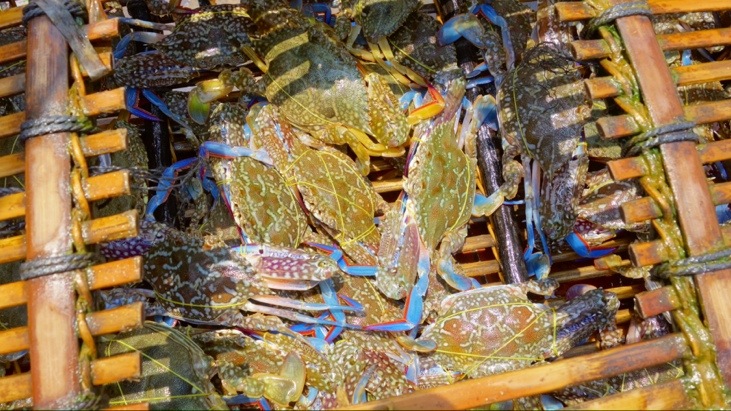
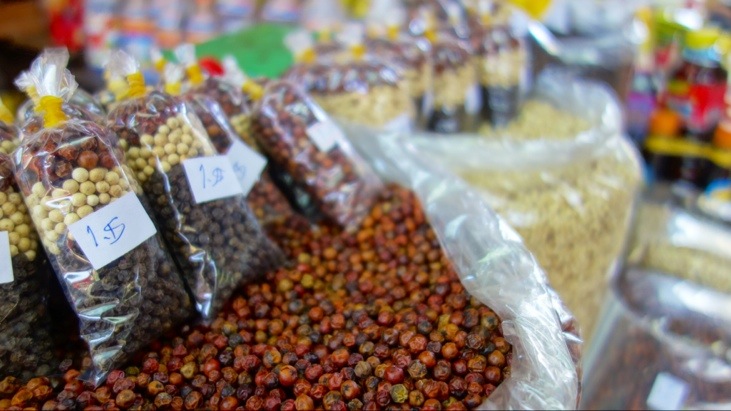
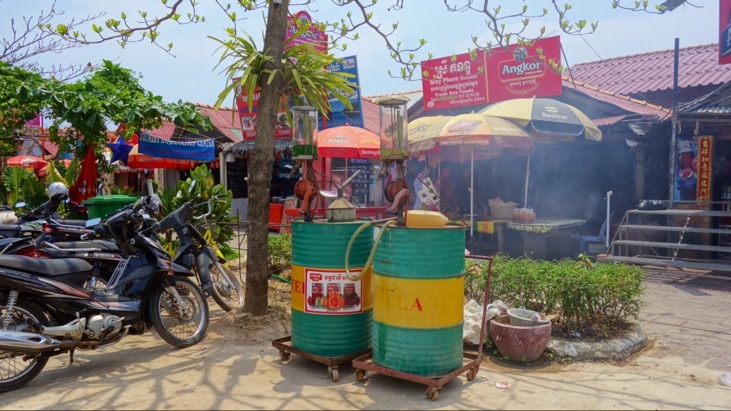
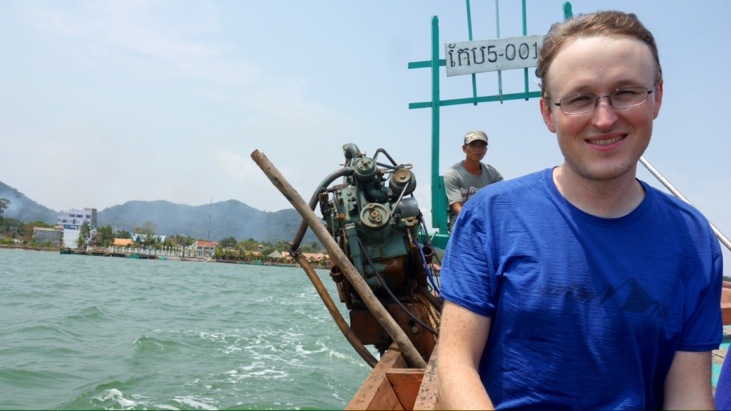
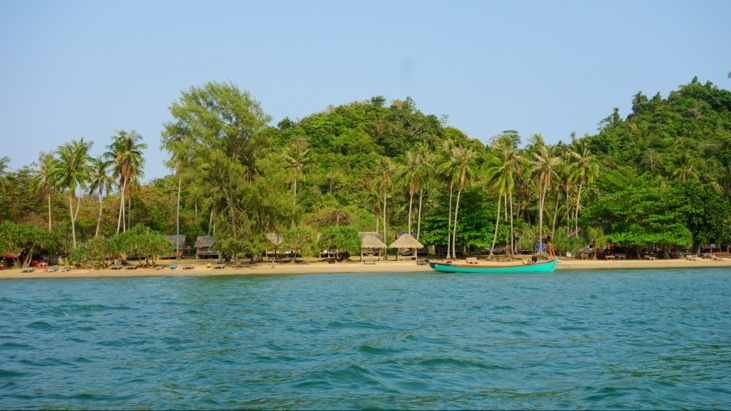

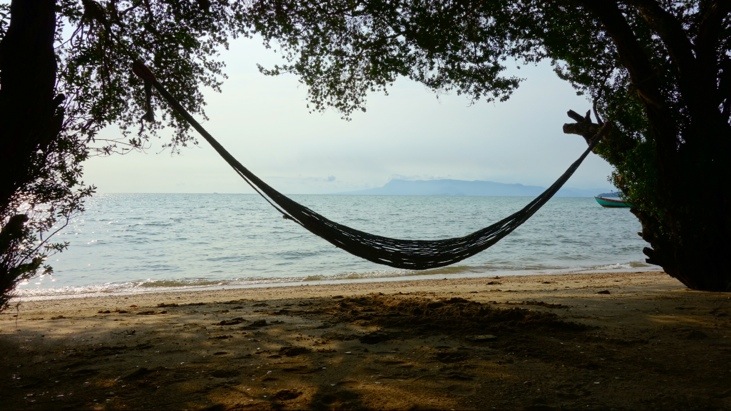
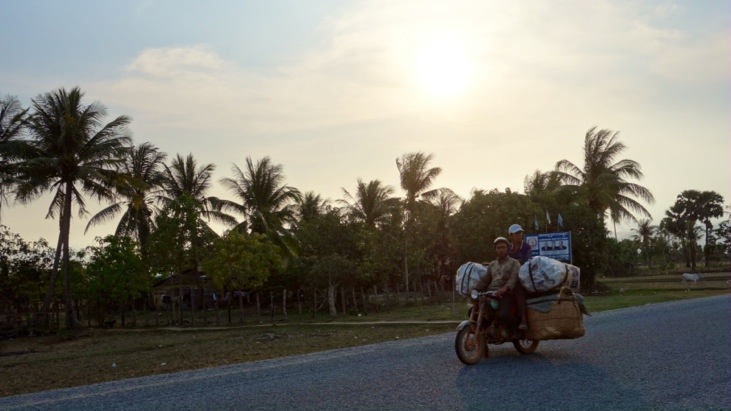
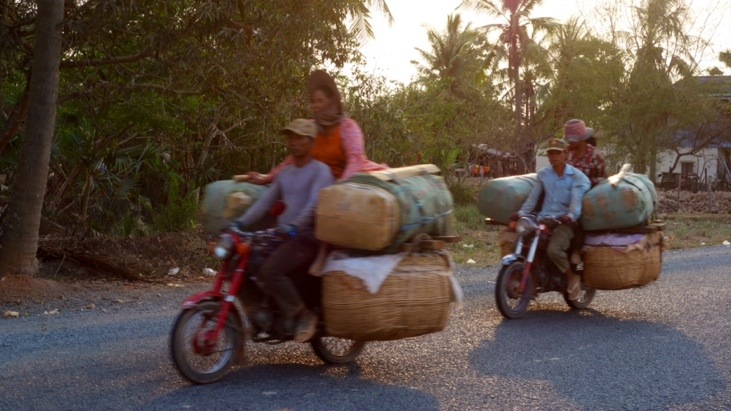
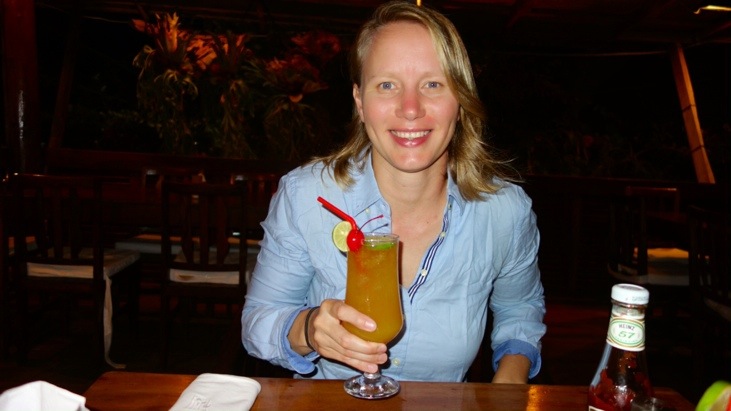
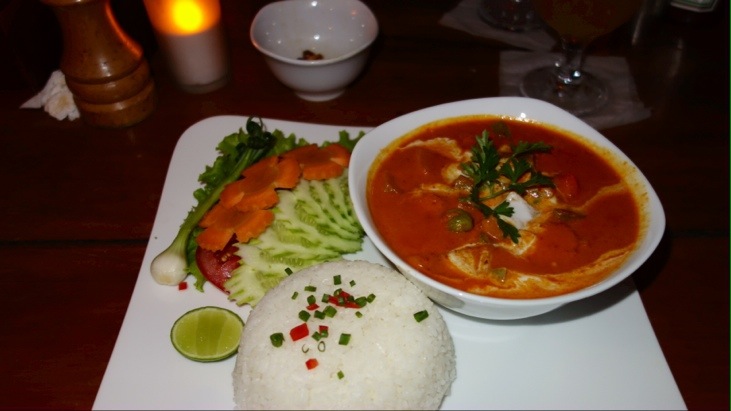
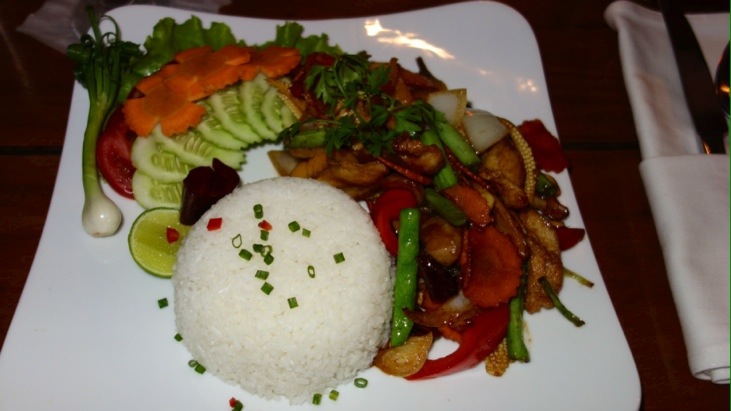
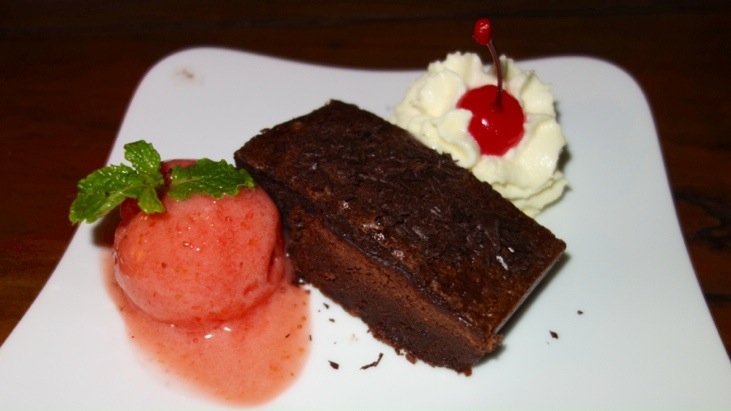
I regularly get hungry while reading your posts 😉